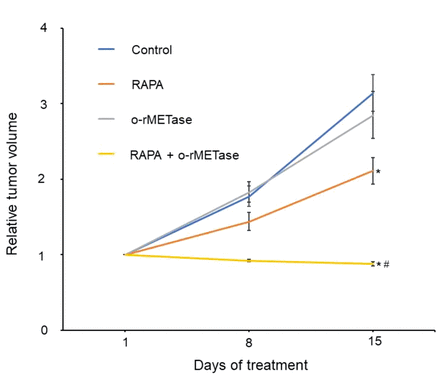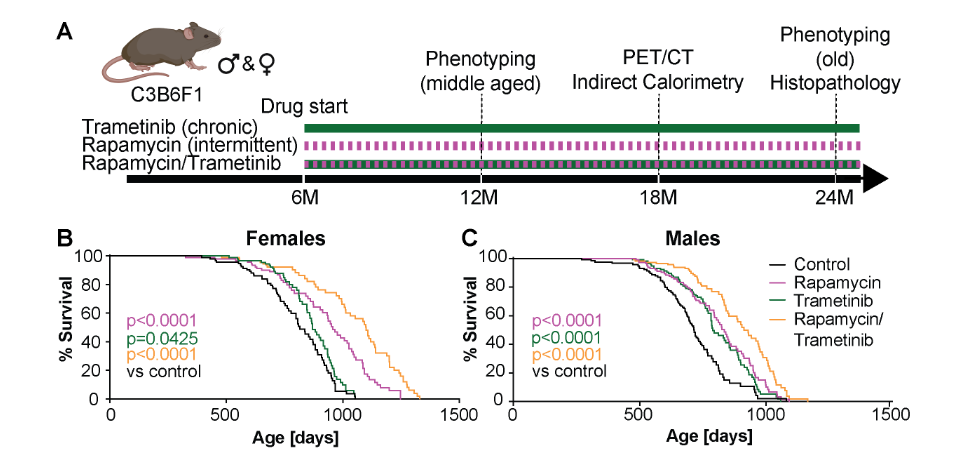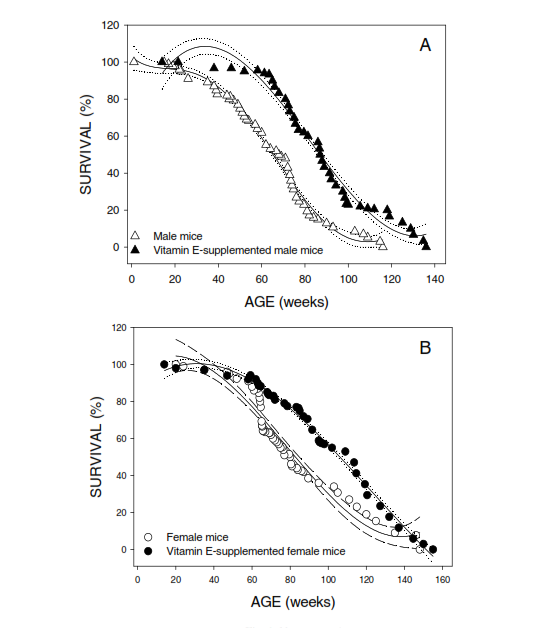Rapamycin: Anti-aging and metabolic dream drug?
-
If one wants to replace rapamycin haiduts lipodd might be a good alternative.
This study compared C15 to rapamycin and other compounds and found the biggest overlap on terms of anti-aging activity between C15 and rapamycin. C15 also inhibits mTOR.
"At their optimal doses, C15:0 shared numerous clinically relevant activities with rapamycin and metformin."
https://www.mdpi.com/2072-6643/15/21/4607What's interesting as well is it's ability to be incorporated into cell membranes . Theres a clear tendency amongst animals: the more saturated the cell membranes, the longer the animals live.
(Book recommendation on this topic: Human longevity by Valentine and Valentine)
-
@Mauritio just to tack on here, my wife and I could not get Lipodd out of the bottle if our life depended on it. It either came out in a jet stream negating the possibility of dosing, or not at all, (to be fair, it could have just been our bottle, but we haven’t tried it again, and unfortunately gave up on it). We did try warming the bottle in some warm water to see if it helped, but no luck.
-
@Mauritio said in Rapamycin: Anti-aging and metabolic dream drug?:
When rapa and methioniase were combined the tumor didn't even start to grow, it even decreased in size.

The implication here is that a low methionine diet and rapamycin are syngergistic.
This is a very interesting combination. For now, I am avoiding pharmaceutical drugs like rapamycin. Having said that, here is another rapamycin study that might be of interest.
A combination of the geroprotectors trametinib and rapamycin is more effective
than either drug alone
-
Iron: an underrated factor in aging
Abstract
Iron is an essential element for virtually all living organisms, but its reactivity also makes it potentially harmful. Iron accumulates with aging, and is associated with many age-related diseases; it also shortens the lifespans of several model organisms. Blocking iron absorption through drugs or natural products extends lifespan. Many life-extending interventions, such as rapamycin, calorie restriction, and old plasma dilution can be explained by the effects they have on iron absorption, excretion, and metabolism. Control of body iron stores so that they remain in a low normal range may be an important, lifespan- and healthspan-extending intervention.
The pdf has hotlinks to 76 references and it identifies them in part using their titles so that they are easy to find.
-
@DavidPS Thanks for sharing that combination study !
Around a 30% increase in life span. Not bad.
This study shows that stacking anti-aging substances (with different mechanisms) lead to an additive effect in life extension. The authors also cite more studies where that was the case in the "discussion" section.In this study:
mTOR is covered by rapamycin.
The ERK pathway by trametinib.Now I'm wondering what would happen if you combine selegiline or ergothioneine with rapamycin since they both have different MoA than rapamycin,targeting oxidative stress mainly.
-
@Mauritio said in Rapamycin: Anti-aging and metabolic dream drug?:
ergothioneine
is taking histidine to increase ergothioneine a good option ? i also have alanine to help generate carnosine (or is histidine rarely a rate limting source)
-
@Mauritio said in Rapamycin: Anti-aging and metabolic dream drug?:
Now I'm wondering what would happen if you combine selegiline or ergothioneine with rapamycin since they both have different MoA than rapamycin, targeting oxidative stress mainly.
Selegiline is another drug that I want to avoid. It has complex influences in the body. I am willing to wait. Vitamin E is surprisingly good for longevity in male mice.

I do not know if it would be additive with rapamycin.

-
@DavidPS wow, 40% increase in median life span in male mice is pretty good!
There must be something that benefits male mice more than female mice about vitamin E.It might be that vitamin E could at least partially substitute for selegiline. Since they're both ameliorating oxidative stress. I think there's a lot to the free radical theory of aging otherwise substances like selegiline, ergothioneine or vitamin E wouldn't be so successful in retarding death.
The oxidative stress is mostly downstream from PUFA consumption IMO, that's Why peat said there would be little use for vitamin E, if PUFA consumption was low or zero.
The above book recommendation comes to mind again.Vitamin E seems to rescue the sickest individual, hence the increase in median life span, but has less drastic effect on maximum life span. In other words it prevents premature death first and foremost.
Which is similar to what selegiline is doing.
I talked about this on the forbidden forum in this post Post in thread 'Selegiline Experiences' https://raypeatforum.com/community/threads/selegiline-experiences.18419/post-903080Btw selegiline has good safety record and has been used in humans for decades. So I don't see any issues with weekly dosing.
-
Another thing about that study is that they used vitamin E acetate.
There have been several studies showing vitamin E acetate as less effective or even harmful compared to vitamin E succinate.In this case the succinate form decreases liver carcinoma by 77% and acetate actually increased it.
https://raypeatforum.com/community/threads/vitamin-e-succinate-very-effective-against-liver-carcinoma-acetate-form-increases-it.35475/Another case: 650% lower tumor volume with vitamin E succinate and no result from acetate.
https://raypeatforum.com/community/threads/vitamin-e-succinate-decreases-melanoma-size-by-650-in-vivo.39088/So I'm wondering how effective Vitamin E succinate would have been for life extension?!
(BTW can someone tell these people that I'm banned on the RPF
 I still see people asking me questions in several threads)
I still see people asking me questions in several threads) -
hey bud, which type of thiamine are you taking?
I had very similar benefits from B1 too (TTFD version), though they seem to have diminished (not sure if it's to do with low glutathione status etc. - https://hormonesmatter.com/paradoxical-reactions-with-ttfd-the-glutathione-connection/#:~:text=The initial phase of processing,use up” their reduced glutathione.)
I tried a B1 version which contained several different types (i.e. hcl, TTFD, Benfo), again had some great results, notably very energetic and somewhat of a pro-dopamine "state", though this diminished too after a day.
-
@Ismail hey man, just using regular old thiamine hcl. I’ve tried others, and they seem to work as well, but I just have to take a little more of the hcl version to get the same results.
-
@evan-hinkle thanks bud

-
Rapamycin is anti-MUFA and anti-cancer.
I suspect that a significant part of rapamycins anti aging effects are similar to having a low PUFA intake. Since rapamycin mostly works through lowering excessive inflammation, which is largely caused by PUFA consumption.
In this in vitro study the authors showed a that rapamycin inhibited SCD1 via mTOR inhibition, which lead to a decrease in breast cancer size.
"In all three cell lines, we found that rapamycin significantly decreased polysome-associated mRNA for stearoyl-CoA desaturase 1 (SCD1), the rate-limiting enzyme in monounsaturated fatty acid synthesis. Activators of mTOR increased SCD1 protein expression, while rapamycin, LY294002 and BEZ235 decreased SCD1 protein expression. "
Also, simply increasing MUFA via SCD1 was enough to cause breast cancer growth, while lowering MUFA had the opposite effect.
"Furthermore, SCD1 siRNA knockdown inhibited breast cancer cell growth, while over-expression increased growth. "
https://www.ncbi.nlm.nih.gov/pmc/articles/PMC2965451/This is only in vitro, so take it with a grain of salt. But I think it coherently outlines a logical mechanism of action . Plus: in several other studies SCD1 has been down to be pro-cancer (and other diseases) and rapamycin has been shown to be anti-cancer. Btw this is "only" increasing MUFA and it already has such terrible effect on the organism, now imagine what increasing PUFA would do...
https://www.cell.com/trends/cancer/fulltext/S2405-8033(23)00032-8 -
Btw today was my first day taking rapamycin myself.
I started with 1mg.
And I notice that I feel very energetic. Normally I feel quite tired after a day of work but today I feel fit, especially mentally. Less brainfog. Also my mood is better.I also notice that I'm calmer and more patient with people.
It's all very early but so far so good.
-
Day 2:
Slept really well. Better than usually . Lost 500g of body weight. Last evening I noticed my metabolism increasing and me heating up.Today I Had a great, day . Felt engaged and interested in what I did . Maybe a little tired ,but nothing crazy.
I had some gut "detoxes" today. Less hair loss.
Motivation increased. Strength was about the same. -
Day 8:
Last days felt hypothyroid, gained water weight.
Had rapamycin yesterday and today lost water weight. Weigh 650g less than yesterday morning, although I ate more than the days before.
Took rapamycin before work... Not a good idea. Was stressed and tired. Will return to after work.I suspect that there might be a rebound mTOR effect after a few days of no rapa, hence the hypothyroid symptoms .
Or Maybe that's the "physiological insulin resistance" that is transient and materializes itself at the beginning of rapamycin treatment.
IIRC rapamycin caused water retention for tarmander as well but it went away.Other than that my energy might be slightly higher but not sure yet.
-
With rapamycin, I’ve always wondered how many effects are downstream of its anti fungal and anti biotic effects. Is there any studies with it in germ free animals?
-
@jamsey found this, but not much else:
https://www.nature.com/articles/s41598-019-44106-5 -
@jamsey Hey, I wonder if this is the wonder drug to get bacterial infection in lymph nodes and bone???
-
Rapamycin increases klotho.
It is even more Peaty than I thought because it lowers phosphate. And phosphate activates mTOR. Rapamycin lowers phosphate and mTOR, decreasing calcification.
"Zhao et al. report that phosphate activates the mammalian target of rapamycin (mTOR) cascade in VSMCs, leading to downregulation of Klotho. Furthermore, rapamycin was shown to halt medial calcification. This effect was blunted in the absence of Klotho. Given the concomitant anti-atherosclerotic effects of the mTOR inhibitor, this agent has clinical potential as an inhibitor of intimal atherosclerosis and medial calcification."
https://pubmed.ncbi.nlm.nih.gov/26422620/
Here, it also increases klotho in aging mice. And it caused a huge increase in survival.
"All mice administered rapamycin survived the 12-week course, whereas 43% of the controls died."
https://pubmed.ncbi.nlm.nih.gov/37190667/
It decreased phosphate in humans.
"In the rapamycin group, serum phosphate was lower than in the CNI group with an increase in phosphate excretion and a reduction in its reabsorption."